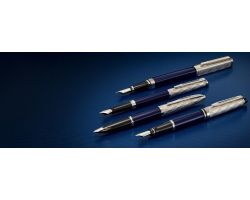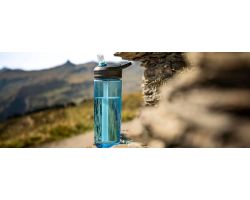Ever wondered what makes hoodies so comfortable and stylish? The fabric plays a big role, from soft cotton to durable polyester blends. But if you're debating between a hoodie vs sweatshirthttps://promostore.co.uk/blog/hoodie-vs-sweatshirt.html, understanding the key differences in design and material can help you choose the best option.
We’ll also show you how the right material affects breathability, warmth, and overall comfort, helping you choose the perfect hoodie.
Whether you're after a cosy fit or long-lasting durability, we’ve got the insights you need to make the best choice.
What Are Hoodies Made Of?
Hoodies are typically made from cotton, polyester, or a blend of both. These materials offer comfort, durability, and warmth, making them the perfect choice for casual, everyday wear.
Key Takeaways:
- Hoodies are typically made from cotton, polyester, or blends of both.
- Each fabric offers unique benefits, such as breathability, durability, and warmth.
- Understanding hoodie fabrics can help you choose the right one for your needs and preferences.
Common Fabrics Used in Hoodies

Hoodies are made from a variety of fabrics, each with its own benefits and characteristics. Here are the most common materials you’ll encounter when shopping for hoodies:
Hoodies are one of the most popular wardrobe staples, loved for their comfort and versatility.
Whether you’re wearing one for a casual outing, lounging at home, or for workouts, a hoodie is the go-to garment that keeps you warm, cosy, and stylish.
But have you ever wondered what hoodies are actually made of?
1. Cotton: Soft, Breathable, and Comfortable
Cotton is one of the most popular materials used in hoodie production, especially for those looking for a natural, breathable fabric.
Cotton is soft to the touch, which makes it ideal for casual wear and lounging. It also has excellent moisture-wicking properties, which means it can absorb sweat and keep you feeling comfortable throughout the day.
Benefits of Cotton Hoodies:
- Soft and comfortable against the skin
- Breathable, making it ideal for warmer weather or active use
- Absorbs moisture, keeping you dry
- Hypoallergenic, making it a great choice for sensitive skin
However, cotton hoodies do tend to shrink after washing and may lose their shape over time if not properly cared for.
Cotton also doesn't retain heat as well as other fabrics, which can make it less suitable for very cold climates unless layered.
2. Polyester: Durable and Low Maintenance
Polyester is a synthetic fabric known for its durability and low maintenance requirements.
Unlike cotton, polyester is less likely to shrink or fade after washing, and it dries quickly, making it a popular choice for activewear and performance hoodies.
Benefits of Polyester Hoodies:
- Durable and long-lasting
- Resistant to shrinking and fading
- Quick-drying, making it ideal for active or outdoor wear
- Affordable and easy to care for
However, polyester is less breathable than cotton, which can make it less comfortable in hot weather.
It also tends to trap moisture rather than wick it away, which can lead to sweat buildup during intense physical activities.
3. Cotton-Polyester Blends: The Best of Both Worlds
Many hoodies are made from a cotton-polyester blend, offering the best qualities of both materials.
These blended fabrics combine the softness and breathability of cotton with the durability and low maintenance of polyester.
A cotton-polyester blend is often used to make hoodies that are both comfortable and practical for a wide range of activities.
Benefits of Cotton-Polyester Blend Hoodies:
- Soft and comfortable like cotton, with added durability
- Retains shape and resists shrinking
- Moisture-wicking properties, making it ideal for active wear
- Easier to care for than 100% cotton hoodies
These blended fabrics are often used in athletic and everyday wear, making them versatile and suitable for various climates and occasions.
4. Fleece: Warm and Soft

Fleece is a popular fabric used in hoodies, especially in colder climates. It’s made from synthetic fibres, usually polyester, and is known for its warmth, softness, and lightweight properties.
Fleece-lined hoodies are ideal for chilly days when you need extra warmth without the bulk of heavy winter jackets.
Benefits of Fleece Hoodies:
- Excellent insulation and warmth
- Soft and comfortable, offering a plush feel
- Lightweight and breathable, yet keeps you warm
- Quick-drying, perfect for outdoor activities
Fleece is a great option for those looking for a hoodie that provides warmth without the weight of traditional wool or down-filled garments.
However, it can be less breathable than cotton and may trap more heat, which can make it uncomfortable in warmer weather.
Factors to Consider When Choosing a Hoodie Material
Choosing the right and the best hoodie materials depends on several factors, such as comfort, durability, and the intended use. Here are some things to keep in mind when shopping for a hoodie:
1. Climate and Weather Conditions
If you’re planning to wear your hoodie outdoors in colder temperatures, a fleece or cotton-polyester blend hoodie is a great option as it offers warmth and comfort.
For warmer weather or active wear, cotton or a cotton blend might be the best choice since it’s lightweight and breathable.
2. Activity Level
For athletic activities or outdoor use, a polyester hoodie or a cotton-polyester blend hoodie is a good option because it’s moisture-wicking and durable.
These fabrics can handle sweat and keep you feeling dry, especially during intense physical activity.
3. Skin Sensitivity
If you have sensitive skin, opt for hoodies made from natural fibres like cotton or organic cotton. These fabrics are gentle on the skin and less likely to cause irritation.
4. Maintenance and Durability
If you want a low-maintenance hoodie that’s easy to care for, polyester or a cotton-polyester blend is a great option. These materials resist shrinkage, fading, and wrinkles, making them perfect for anyone looking for a durable and hassle-free hoodie.
Pair it with branded beanies for a coordinated look, or explore promotional travel accessories to stay comfortable on the go. Whether you're gearing up for a casual outing or putting together a corporate giveaway, adding items like bespoke stress balls can make your brand stand out while offering practical value.
How to Care for Your Hoodie
A hoodie is a wardrobe staple that provides both comfort and style, but to maintain its quality and longevity, it’s essential to take care of it properly.
Whether your hoodie is made from cotton, polyester, or a blend of both, the right care will help preserve its softness, shape, and colour.
Here are some practical tips to ensure your hoodie stays in top condition for years:
Wash on Cold
To protect your hoodie from shrinking and fading, always wash it in cold water. Hot water can cause the fabric to contract and the colours to fade faster.
By washing on cold, you preserve both the size and vibrancy of your hoodie, keeping it looking as good as new. Additionally, using cold water is also a more eco-friendly choice.
Air Dry
While it’s tempting to throw your hoodie in the dryer for quick results, this can actually damage the fabric over time.
The heat from the dryer can weaken the fibres, causing your hoodie to lose its softness and shape. Instead, opt to air dry your hoodie by laying it flat or hanging it to dry.
This method not only helps maintain its texture but also prevents any unwanted shrinkage.
Avoid Fabric Softeners
Fabric softeners may seem like a good way to keep your hoodie feeling soft, but they can actually break down the fibres, making the fabric less breathable over time.
Instead of using fabric softeners, consider using a gentle detergent that’s designed for sensitive fabrics. This will help keep your hoodie soft without compromising its structure or comfort.
Store Properly
How you store your hoodie matters too. To keep it in its best shape, avoid leaving it in a damp, hot, or humid place.
Store your hoodie in a cool, dry place, preferably folded neatly or hung up to prevent it from losing its shape. This will ensure it stays soft, fresh, and ready to wear whenever you need it.
By following these simple care tips, you can maintain your hoodie’s comfort, style, and longevity, ensuring it stays a cosy and durable part of your wardrobe for years to come.
Frequently Asked Questions
1. What material is best for a hoodie?
The best material depends on your needs. Cotton is soft and breathable, while polyester is durable and moisture-wicking. A cotton-polyester blend combines the best of both, offering comfort and practicality.
2. How do I care for my hoodie?
To keep your hoodie in good condition, wash it in cold water, air dry, and avoid fabric softeners. Store it in a cool, dry place to maintain its shape and softness.
3. Can I wear a hoodie in warmer weather?
Yes, cotton or cotton-blend hoodies are great for warmer weather since they’re lightweight and breathable. If you’re looking for an extra layer without added bulk, a custom branded gilet can be a stylish and practical choice. On the other hand, heavier fabrics like fleece are better suited for cooler temperatures. for cooler temperatures.
Conclusion
Hoodies are made from a wide variety of materials, each with its own unique benefits.
Whether you choose a soft cotton hoodie for breathability, a durable polyester hoodie for low maintenance, or a fleece-lined hoodie for extra warmth, understanding the material will help you make the best choice for your needs.
A cotton-polyester blend offers a great combination of comfort and practicality, making it ideal for everyday wear.







